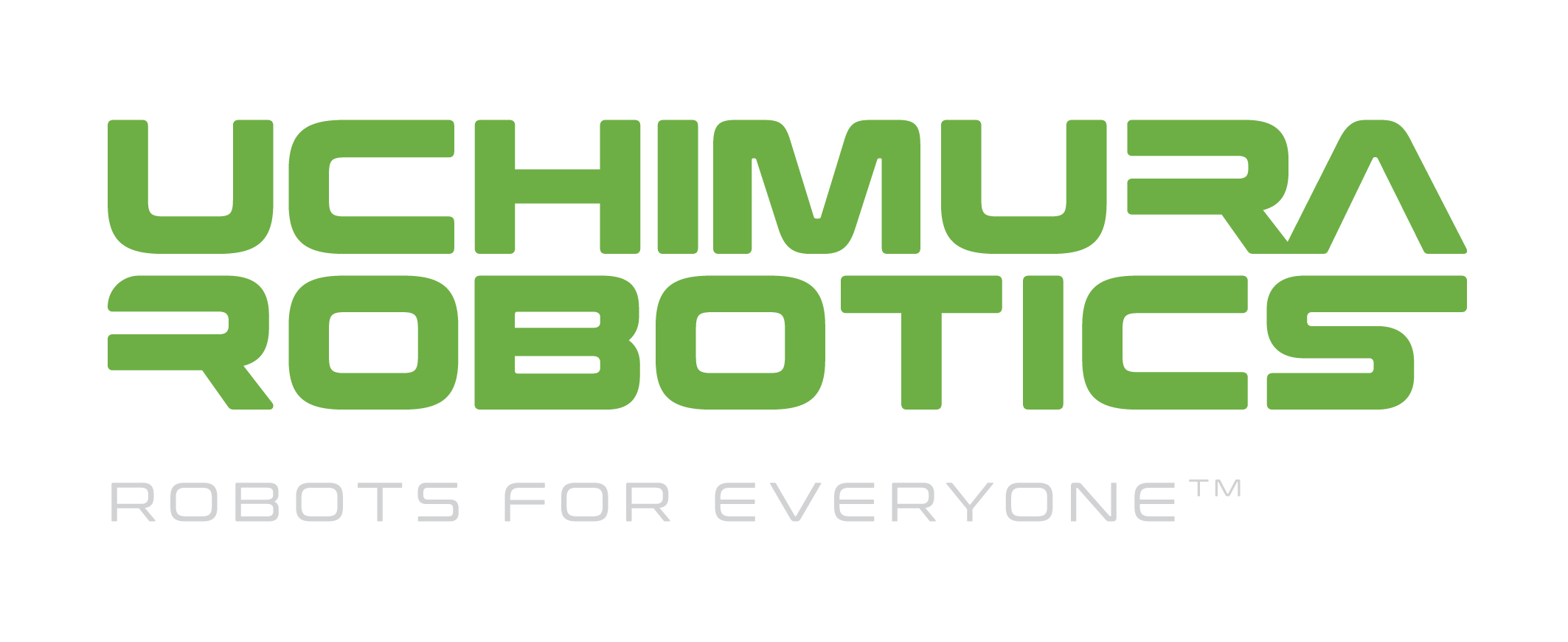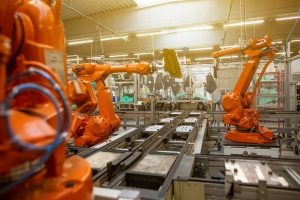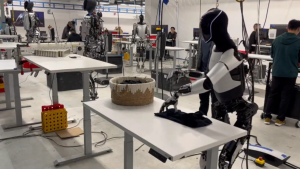Deburring might look simple—just remove sharp edges and you’re done, right? In reality, robotic deburring is one of the most deceptively complex processes to automate. Achieving a consistent, high-quality finish across varied parts and materials demands much more than just mounting a tool to a robot. Instead, it’s about the right system architecture: selecting and matching the best robotic tool changers, spindles, compliance devices, and control strategies for the application.
When it comes to robotic grinding and deburring tools, three companies consistently set the benchmark: ATI, PushCorp, and Suhner. Each vendor brings a unique approach to tool architecture, compliance (force control), and integration flexibility. If you’re seeking deburring automation flexibility and want to optimize for uptime, quality, and ROI, understanding these differences is essential.
Breaking Down the Components of a Robotic Deburring System
A robust robotic deburring system is more than just a tool at the end of an arm. Key components include:
- Tool: Grinder, blade, or cutter for the specific deburring task.
- Spindle: Motorized or passive, provides the motion and power.
- Compliance device: Maintains precise contact force.
- Tool changer: Essential for flexibility in mixed-model production.
- Controls: May be robot-side or external PLC.
Each supplier—ATI, PushCorp, and Suhner—integrates these elements differently. Matching these components to your needs directly impacts downtime, throughput, and the consistency of your finished parts.
Tool Changers: Unlocking Flexibility in Deburring Automation
Robotic tool changers are the backbone of automation flexibility, enabling a single robot to switch between multiple deburring and finishing tools automatically. This is particularly important for mixed-model production lines, tight surface finish tolerances, or fully lights-out operations.
- ATI: The undisputed leader in automatic tool changers, ATI’s portfolio covers every major robot OEM and a vast array of spindles and compliance devices. If you need seamless integration and rapid changeovers, ATI is the go-to.
- PushCorp: Typically associated with dedicated, heavy-duty deburring cells, PushCorp’s systems usually keep a single tool mounted due to their robust construction. While tool changing is possible, it’s less common—ideal where brute force matters most.
- Suhner: Offers both OEM automatic tool changers and custom tool hangars, supporting flexible tool storage and multi-process automation.
Why Tool Changing Matters
Automatic tool changing unlocks new levels of deburring automation flexibility—for example, pairing a high-powered grinder for roughing with a finishing tool, letting your robot switch between them as needed. This reduces changeover time, increases uptime, and allows for complex part processing without manual intervention.
Spindles and Deburring Tools: Power Meets Precision
The spindle is the heart of any robotic deburring tool, defining both its power and its precision:
- ATI: Specializes in low- to mid-power electric and pneumatic spindles, plus compliant blades ideal for lighter materials and standard edge breaks.
- PushCorp: Known for high-powered spindles (2–5 HP), delivering robust performance on tough materials like steel and cast iron.
- Suhner: Balances mid-power spindles with advanced force control, often integrated with smart, motorized compliance devices for consistent results across complex contours.
What to Consider
Compare not just raw power (HP), but also torque, speed control, and RPM ranges. If your task demands fine control and complex shapes, look to Suhner. If sheer force and throughput are the priority, PushCorp leads. For lighter, high-mix production, ATI’s flexibility wins.
Compliance Devices: Active vs. Passive Force Control
Compliance is how a deburring tool maintains steady contact force—a make-or-break factor for part quality. Two main strategies dominate:
- Passive compliance (ATI & PushCorp): Uses air pressure or spring mechanisms for simplicity and lower integration effort.
- Active compliance (Suhner): Employs real-time force feedback via motorized actuators, offering unparalleled control for demanding applications.
| Vendor | Compliance Type | Best For |
|---|---|---|
| ATI | Passive | Standard edge breaks, part variability |
| PushCorp | Passive | Heavy burrs, single-surface removal |
| Suhner | Active | Complex contours, consistent finish |
Active compliance adds upfront cost, but the ROI is clear in situations where consistency and surface finish are critical. Passive systems are easier and cheaper to set up, making them ideal for standard tasks.
Use Case Comparisons: Where Each Vendor Shines
- ATI: Dominates in automotive cast part deburring, such as aluminum brackets and engine covers, where flexibility and part mix are high.
- PushCorp: Best for steel truck suspension components and other applications requiring heavy-duty, single-surface burr removal.
- Suhner: Excels in appliance panels and decorative die-cast parts, where edge profiling and visual quality drive success.
Your application’s mix, finish requirement, and production volume should steer your decision. The right tool and system mean less downtime and better throughput.
See these robots in action:
ATI: Watch here
PushCorp: Watch here
Suhner: Watch here
Programming and Controls: Integration Considerations
Integration effort can be the difference between a quick win and a complex project:
- Suhner: Advanced force control means an OEM control panel is often required for diagnostics and real-time tuning.
- ATI and PushCorp: Simpler robot-side I/O and force tuning via air or basic feedback, making for faster deployment and easier programming.
PLC vs robot-side control: For multi-tool or multi-zone cells, PLCs may be required; for simpler setups, robot-side control suffices.
Ease of setup, force control tuning, spindle activation, and safety integration all differ between vendors—plan accordingly!
Conclusion: Match Your System Architecture to Application Complexity
There’s no one-size-fits-all for robotic grinding and deburring tools. The best results come from matching system complexity to your application needs:
- Simple edge breaks? Choose ATI for rapid deployment and flexibility.
- Heavy-duty removal? PushCorp’s high-powered spindles are built for the job.
- Complex contours or variable parts? Suhner’s active compliance and smart controls deliver precision.
Often, the ideal solution is hybrid—multiple tools, tool changers, and control strategies combined in one robotic cell. With the right integration, you gain not only consistency and uptime but a competitive edge in automated manufacturing.
Looking to automate your deburring process?
Evaluate your priorities, consult with vendors, and design a system that balances tool changer flexibility, compliance technology, and control integration. The payoff: higher part quality, less downtime, and a future-proofed production line. Contact us here.






